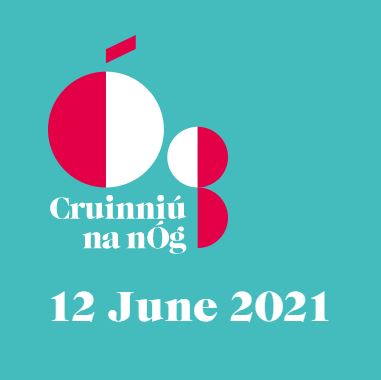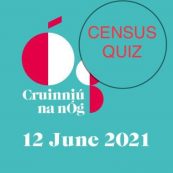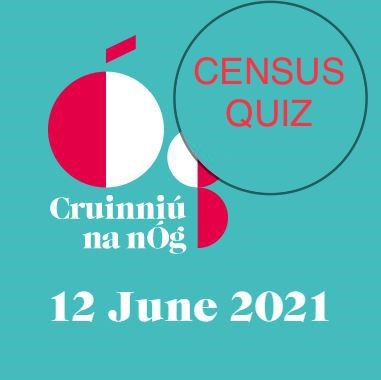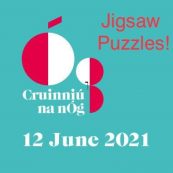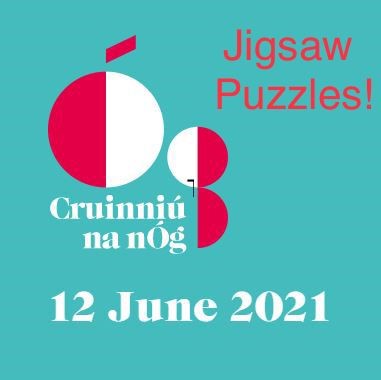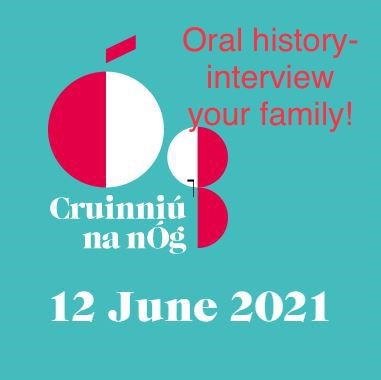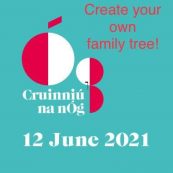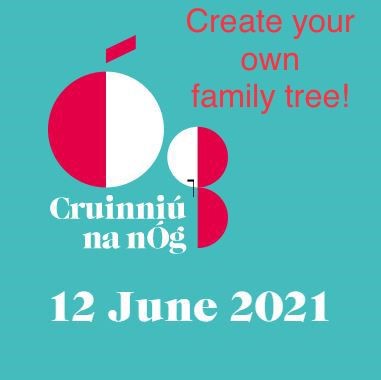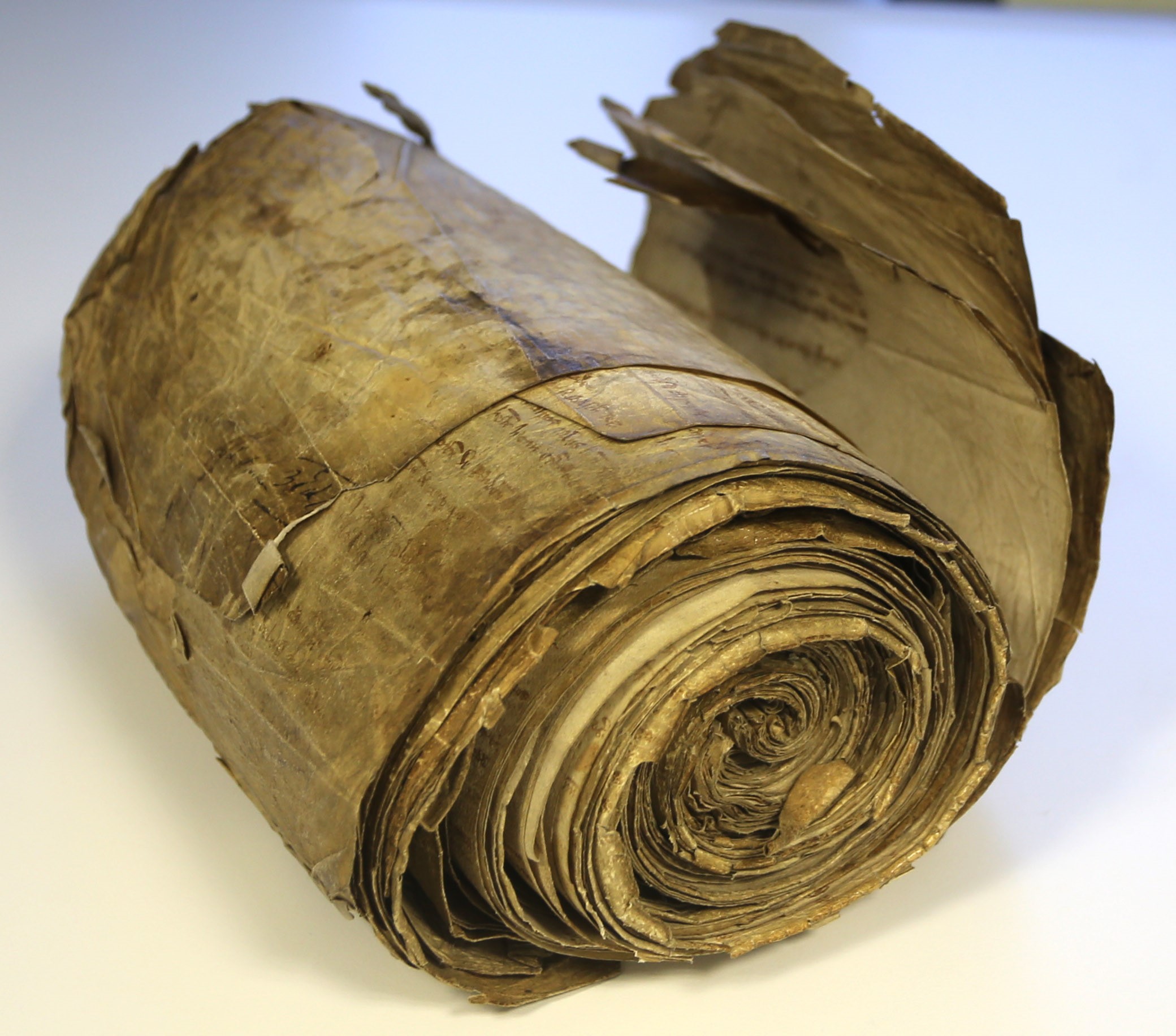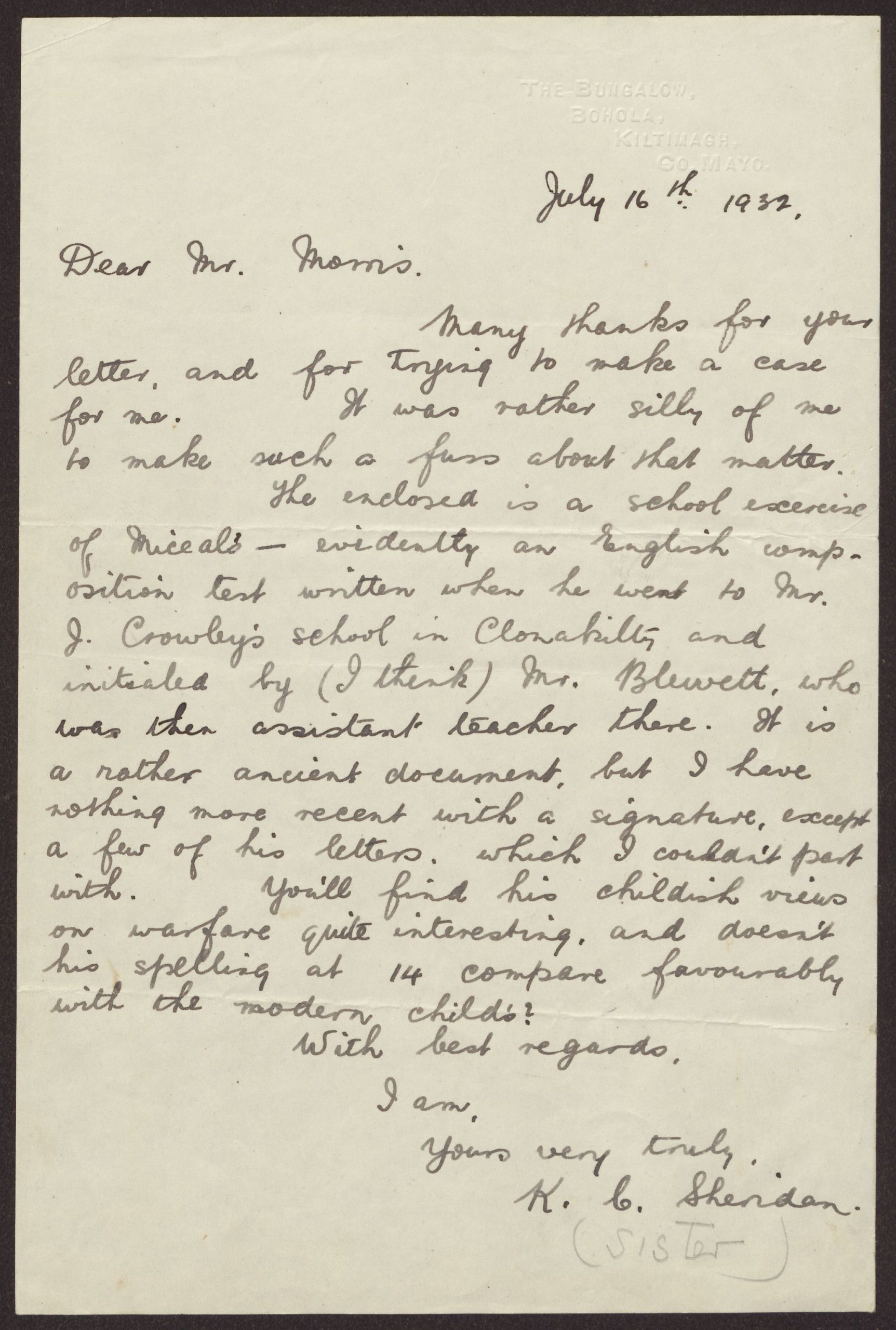The census is one of the most important collections in the National Archives. A census is essentially a count of all people in the country on a particular day. The census generally occurs every 10 years but the 1901 and 1911 census are the first complete examples we have for Ireland and they can both be searched online here.
We have below some instructions on how to search the collection in order to find the answers to our quiz questions (the answers to which are on the very bottom of this page – no cheating!)
Question 1: In 1911, Flora Swift worked as a nurse at a hospital on Bloomfield Avenue, Dublin. How old was she?
a) 32
b) 22
c) 42
Question 2: Mount Anville convent in County Dublin had members who were born in many different countries staying there in 1911. In what country was Emilie de Batz born?
a) Italy
b) France
c) Hungary
Question 3: Can you find Eamon de Valera’s home address in 1911? (Clue: he is listed under the English version of his first name, Edward).
Question 4: The famous Lady Augusta Gregory was staying in Nolan’s hotel, Dublin on the night of the 1911 census, can you find the address?
Question 5: Henry Doyle of St. James’ Parish in Dublin and had an interesting occupation in the Phoenix Park. Which of the following was it?
a) Gardener
b) Night watchman
c) Gate Keeper
Question 6: The Coad family of Ballymaclode, Faithlegg in county Waterford had a famous local business. Were they:
a) Blacksmiths
b) Boot and shoe merchants
c) Tailors
Instructions on how to search the Census Returns in the National Archives
The following is a very simple guide to using our digitised census returns. More detailed information is available from our website at http://www.census.nationalarchives.ie/search/#searchmore
When you get onto the census page in our website press on the prompt Search the census records for Ireland 1901 and 1911.
This will open a page with the following boxes: (1) Census year, (2) Surname, (3) Forename, (4) County, (5) Townland/street, (6) DED, (7) Age + or – 5 years and (7) sex.
The census year box had a dropdown (a little black triangle which you can click on) and this gives you the option of choosing the census year of 1911, 1901, 1851, 1841, 1831 or 1821. Remember however, that the only surviving full censuses are for 1901 and 1911 and only fragments survive for the other census years.
The surname box allows you to enter the surname of the person you are interested in and the forename box allows you to enter their Christian name.
The county box also has a dropdown and you can choose which particular county to search within. Remember that Kings County is now County Offaly and Queens County is now County Laois.
The townland or street box allows you to enter the townland and street. In Ireland the townland is generally the smallest administrative division of land.
The DED box allows you to search by district electoral division. The DEDs are groups of adjoining townlands.
The age + or – 5 years box allows you to enter an approximate age for the person you are looking. This means that if you are looking for a person and you enter an age into this box, you will also get people who are five years old or younger than the age you entered. This is very useful because sometimes the exact age of people might not accurately appear on the census form for various reasons.
The box marked sex has a little dropdown which allows you to look for a male or female.
Let us say that you’re looking for a man named John Clancy who was alive in 1911. The more information you have about the person you are looking for – address, age etc. – means that you can fill in more boxes and find them more easily. If you decide to search for John Clancy in the 1911 census and enter no other information apart from his name, you will get 325 hits. However, if you know that John Clancy was aged about 30 and lived in Clare you will get 7 hits. If you click on any of these 7 you will get a transcript (a printed version) of the census return. The details that you find in these returns (names of other family members, occupations etc.) will hopefully help you identify the John Clancy you are interested in. Remember to click on the “show all” information box to get a full transcript of the particular return.
When you open a page relating to a particular return you will see at the bottom a View Census images box. If you press the Household Returns (Form A) button you can view the original census image which was filled in by the head of the household on the night of the census.
When you are doing a search remember that if you click the “more search options” button in the middle of the search page you can search the website by religion, occupation, county or country of origin, knowledge of the Irish language, specified illness and child survival information. The boxes in “more search options” relate to (1) relation to head of household, (2) religion, (3) literacy, (4) occupation, (5) marital status, (6) county/country of origin, (7) language proficiency, (8) specified illnesses and there are three boxes under marriage and children: (9) number of years married, (10)numbers of children born and (11) number of children living.
In the household returns, one person, often the father or husband, is designated the head of household. The relation to head of household box has a dropdown list of titles – wife, son, daughter etc. – showing the relationship of that person to the head of household. The dropdown includes people who were not relatives, such as lodgers, boarders, servants, visitors etc.
The religion box has a dropdown which includes eleven main religious denominations – Roman Catholic, Church of Ireland, Church of England etc. There are also categories for people who refused information or gave other religious affiliations. You can find out, for example, that in 1901 there were 3635 Jewish people living in Ireland.
The literacy box has a dropdown which includes the following categories: any, cannot read or write, can read only, can read and write, and other. Over three quarters of a million people in Ireland were not able to read or write in 1911.
The occupation box has no dropdown and it enables you to enter the occupation yourself. You can use this box to help trace a relative whose occupation you know or find information about particular occupations. Enter “clown” and you will get some interesting results!
The marital status box dropdown has the categories any, married, single, widow, widower or other. The numbers of widows in Ireland in 1911 was more than double that of widowers.
The county/country of origin box has a dropdown which starts with a list of Irish counties arranged alphabetically and then a list of countries arranged alphabetically (including Scotland and Wales) as well as a category designated “other”. You will be surprised at the number of people living in Ireland in 1901 and 1911 who had been born in distant parts of the world.
The language proficiency box has a dropdown which includes the following categories: any, Irish, English, Irish and English and other. This gives a fascinating insight into the use of the Irish language at the beginning of the 20th century.
The specified illness box includes the dropdowns deaf, dumb, deaf and dumb, blind, idiot, imbecile, lunatic, other and any. Some of these descriptions are very offensive today. The words idiot and imbecile are old medical terms referring to people who were intellectually disabled and the word lunatic is an old term referring to those who were mentally ill.
The boxes under marriage and children have numerical dropdowns which allow you to search under numbers of years married, numbers of children born and numbers of children still living. You will find that people had many children in the early 20th century and that many of them died in infancy.
The “more search options” allow you to answer very interesting questions regarding life and people in Ireland in 1901 and 1911. For example, you could find out how many people living in a particular county – say Donegal – were born in China in 1901. To do this you should press on the census year box and choose the year 1901. Then press on the county box and choose Donegal in the dropdown. Press on the “more search options” button and choose the box relating to county/country of origin. The dropdown will first show Irish counties in alphabetical order and then countries in alphabetical order. Click on China and then press search. You will find that one person, Lizzie S. Stubbs, from the Salthill Demesne, Mountcharles, County Donegal, was the only person living in Donegal who was born in China in 1901.
Have a look at our website for more information about using the census returns.
QUIZ Answers: Q1 – b; Q2 – c; Q3 – Morehampton Terrace, Dublin ; Q4- 16 Frederick St, South Dublin (Royal Exchange); Q5 – c ; Q6- b
